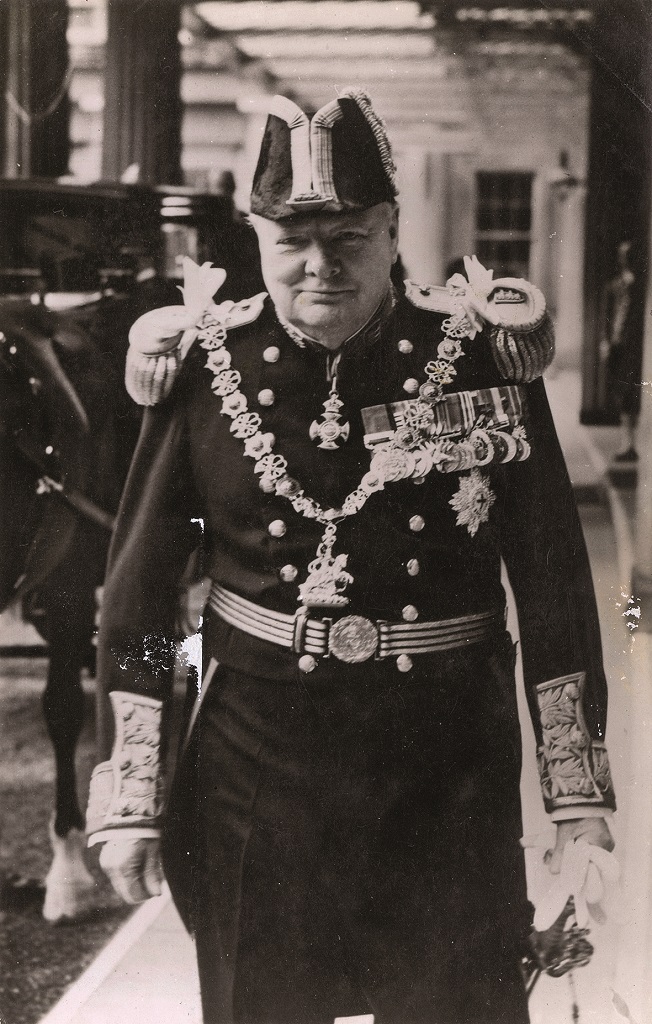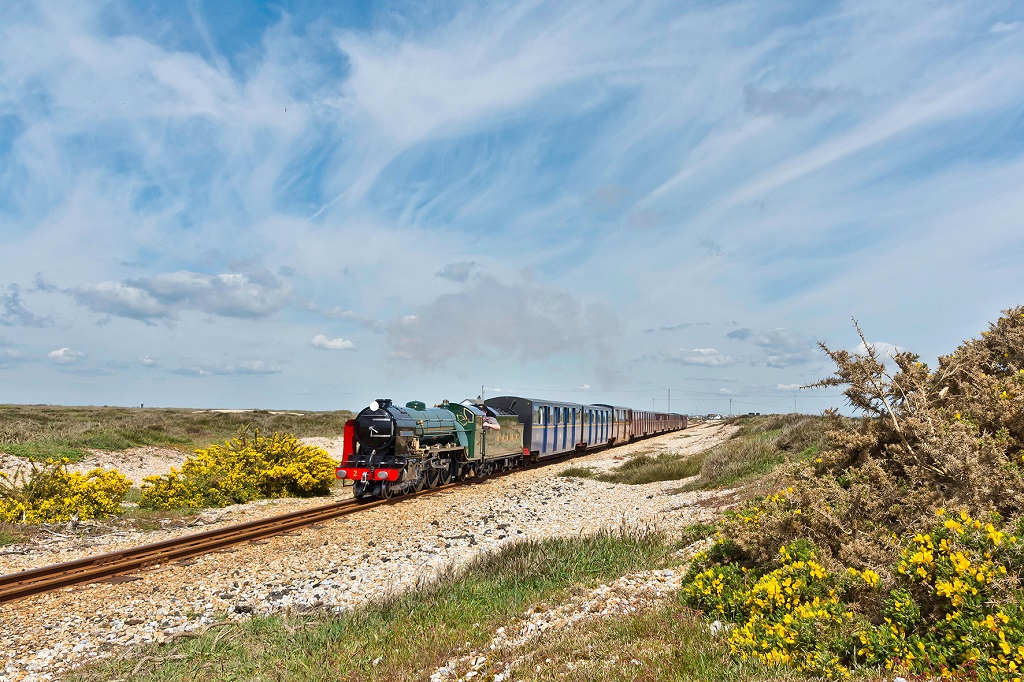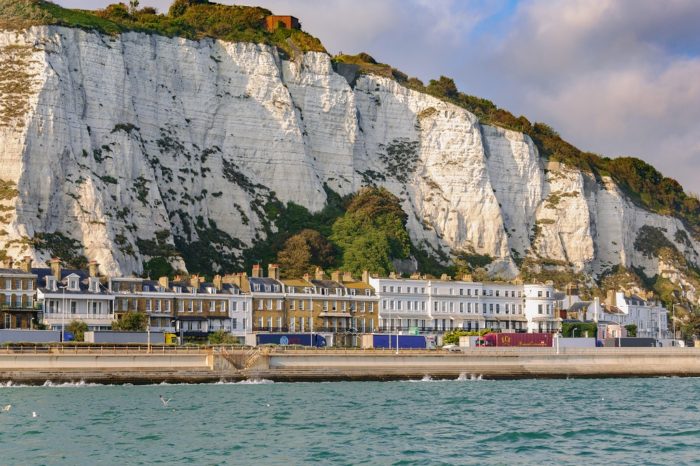The last defence: Winston Churchill and the Cinque Ports
Nancy Alsop explores the Cinque Ports, a confederation of five coastal towns created by King Edward I and once presided over by Winston Churchill
When, in 1924, Winston Churchill took up residence at Chartwell, his beloved country house near Westerham in Kent, he soon discovered the existence of an obscure ancient rivalry between a faction from the west of the county going by the name “Kentish Men” and another from the east who rejoiced under the similar moniker “Men of Kent”. The Oxfordshire-born Churchill doubtless did not share the fervour of feeling on either side; he did, however, years later, come to lay unique claim to both sides when, in 1941, he was appointed to the lifelong post of Lord Warden of the Cinque Ports, with the role’s attendant right to take up residence in the county’s Tudor artillery fort, Walmer Castle. That he united both rival factions in mutual approval of this non-native of the “Garden of England” is testament to Churchill’s knack for pulling off the impossible, more than anything else.

In the event, Churchill was somewhat preoccupied by the Second World War, and therefore delayed until further notice the usual installation ceremony at Kent’s other great fortress, Dover Castle, particularly given that it was within range of German attack from the skies.
Nonetheless, he was enchanted by the historic appointment, even if the proper celebration would have to wait until 1946. He made up for it later by wearing the Lord Warden’s ceremonial outfit at any given opportunity, including at the coronation of Queen Elizabeth II in 1953, and by hoisting up the role’s heraldic flags at Chartwell after the war. And no wonder. For as Lord Warden, Churchill continued a tradition that stretched all the way back to 1100, by which time the Norman French term Cinque Ports (literally “Five Ports”) was in documented use. Although today entirely nominal, the Cinque Ports encompass five historic towns: Hastings, New Romney, Hythe, Dover and Sandwich, each dotted along the Sussex and Kent coastline at the point at which the English Channel, separating England from France and mainland Europe, is narrowest.
King Edward I presided over the creation of the Cinque Ports. He struck a symbiotic agreement that was both highly beneficial to his own ambitions and also to each of the Cinque Ports (which were supported by the “ancient towns” of Rye and Winchelsea). The idea was that the string of strategic coastal towns, already busy fishing and trading centres, would always maintain some 57 ships at ready disposal for the Crown, a vital commodity at a time when the king was busy developing the Royal Navy. Neighbouring towns and villages eventually joined the original five towns and were known as the “limbs”; together they would help to fulfil the quotas of ships and crew.

In return, the towns were granted the local profits of justice, and it was officially settled that they would receive “exemption from tax and tolls; self-government; permission to levy tolls, punish those who shed blood or flee justice, punish minor offences, detain and execute criminals both inside and outside the port’s jurisdiction, and punish breaches of the peace; and possession of lost goods that remain unclaimed after a year, goods thrown overboard, and floating wreckage.”
The Cinque Ports were, then, permitted to bring goods into the country without the burden of taxes, so long as the King was furnished with both ships and men at any time of need. The upshot? Perhaps inevitably, the lenient attitude towards taxes and tolls led to smuggling of goods from across the Channel. It was, as the Crown saw it, a price worth paying, and the King agreed further to the ports also having the privilege of sending two MPs per town to Westminster, as well as to creating the office of the Lord Warden, whose automatic privilege it was to dually be named the Constable of Dover Castle. It was and remains a prestigious role; Churchill was preceded by the likes of various Princes of Wales, and succeeded by Queen Elizabeth, The Queen Mother and the current incumbent, Baron Boyce.

The confederation of the Cinque Ports has in effect, however, been in some kind of decline – at least from a military perspective – since the 13th century. Their strategic creation allowed them to stand firm against raids from overseas, including attempts by the Danes and the French, but natural silting of the harbours, as well as advancement of the navy itself, and the call for larger ships than the Cinque Ports could accommodate, saw a certain amount of relocation to the larger Southampton and beyond. By the time that Queen Elizabeth I acceded the throne, they had already begun their downward trajectory and, during her reign, efforts were already underway to save the crumbling Cinque Ports from ruin, as larger shipbuilding towns, such as Bristol and Liverpool, were on the rise.
The ports were not, however, defunct, even if their original purpose had shifted. They continued to supply transport ships through the centuries and, today, while their strategic and naval importance has dwindled to nil, they still lure people who come both for the history and the fresh south coast air. While there have been some major changes since the foundation of the Cinque Ports – namely that swathes of Hastings have been swept into the sea and that New Romney and Sandwich are now both more than a mile from the seafront – there is still much of charm and wonder to see.

Those curious about the Cinque Ports will find much in the way of heritage to discover. Dover – with its famous white cliffs that were of great symbolic significance to the great 20th-century Lord Warden Churchill – is a great place to start. Of the five towns, it is alone in remaining a hugely busy passenger port. While here, visitors should explore Dover Castle, its great grey walls encasing a Saxon church and even a ruined Roman lighthouse. Known as “the Key to England” on account of its defensive significance, it is also part of the Cinque Port story, thanks to the Lord Warden’s dual role as Constable of Dover Castle until 1708.
Also worth a visit is the Maison Dieu, a 13th-century wayside hospital under the auspices of English Heritage, where visitors can see, among other things, a 17th-century Cinque Port banner. A short journey to the north of Dover takes Kentish coast travellers to the pretty town of Sandwich, where the centre may no longer be on the very seafront, but the streets constitute one large area of conservation; indeed, Sand Street is considered to be the longest stretch of timber-framed buildings in existence. Do pay a visit to Sandwich’s four historic churches (St Peter’s is perhaps the most impressive) and unearth a wealth of history at the Elizabethan era Guildhall, which was built in 1579 – it’s worth it for the building alone.

Hopping down the coast to the southernmost Cinque Port of Hastings, head straight for the old town with its proliferation of half-timbered buildings; it is packed with attractions, from the Hastings Contemporary art gallery to Alistair Hendy’s Edwardian-style hardware shop and the delightful fish market in shacks on the seafront. For the Cinque Port-focused traveller, opt for the town’s two maritime attractions. At the wonderfully named Shipwreck Museum, one can admire artefacts from many of the vessels wrecked in the English Channel centuries ago, as well as exploring how these amazing wreckages have been preserved. Meanwhile, the Fishermen’s Museum is set inside a former chapel used by local sailors and managed by the Old Hastings Preservation Society; discover model boats, maritime artworks and more.
Lying in between Sandwich and Hastings are the smaller Cinque Ports of Hythe and New Romney. The former became a borough in 1026 when King Canute signed the documents conveying the lands of Hythe to the Church at Canterbury. It is home to one of only two ossuaries in the country, housed within St Leonard’s Church and containing bones pre-dating the Norman Conquest. Hythe lost its harbour during the Middle Ages, but it remains a charming place. History buffs: do note that you can clap eyes on the Charter of 1278 in the town’s archives. The “ancient towns” of Winchelsea and Rye are drowsily charming places to visit too. For fans of absurdist humour, the former should rank high on the list of pilgrimage destinations thanks to one accolade alone: the beautiful St Thomas’ Church is the final resting place of comedian Spike Milligan, whose headstone was voted the UK’s favourite thanks to his self-penned epitaph: “I told you I was ill”. Rye, meanwhile, is notable for the 18th-century Lamb House, which today is home to a National Trust-run writer’s house museum on account of it being the former home of both American-British author Henry James and the under-appreciated Mapp and Lucia creator EF Benson. The Cinque Ports’ original function may long have been rendered obsolete, but our enduring love affair with this stretch of the English coast remains testament to their staying power.




